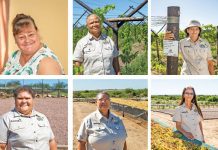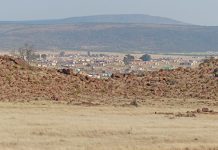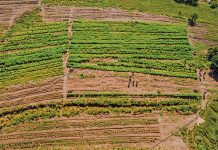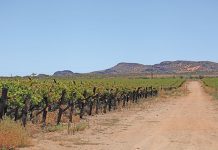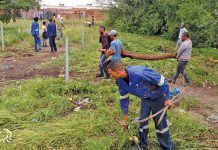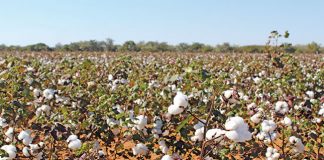Renosterveld: just bossieveld, uitvalgrond, or something unique and special to be treasured by those who are lucky enough to own a piece of it? The answer is clear to anyone who cares about conservation. The few fragments that remain are full of hidden botanical treasures in the form of hundreds of rare and endemic bulbs and other unique plants. Renosterveld is found in the low-lying, fertile areas of the Western Cape. Most farmers think of it as just renosterbos, but this is not the case. Historically, renosterveld supported large numbers of big game, including black rhino, eland, bontebok and the endemic, now-extinct bloubok, as it was much richer in palatable grasses and shrubs, particularly in areas with higher rainfall.
As most veld managers know, when veld is overgrazed, the unpalatable species take over and in this case renosterbos or Elytropappus rhinocerotis. Hundreds of years of overgrazing have turned this veld into a grey, monotonous shrubland of very little grazing use. Here and there a few farms still have renosterveld retaining some of its true characteristics. Those near Napier and Swellendam, for instance, still have a lot of rooigras (Themeda triandra).
Farmers to the rescue
Today, less than 7% of the renosterveld remains, confined to steep, rocky areas that cannot be ploughed. These fragments are rich in plant life, particularly bulbs, and contain hundreds of endemic species found nowhere else in the world. This makes them a top priority for conservation. Almost all remnant renosterveld is on private land, making it subject to further transformation, degradation through mismanagement and invasion by alien shrubs and grasses.
The future of renosterveld certainly appears bleak. However, there is some hope for our natural heritage – and it lies with the farmer. Currently, conservation managers and scientists are finding ways in which farmers can benefit from putting their land aside for conservation, or at least managing their land in a more conservation-friendly way. Some of the incentives that either exist already, or have been suggested, include tax rebates for conserved land, help with alien vegetation clearing, help with improved fencing around renosterveld fragments, and the compilation of detailed management plans for individual farms.
In addition, it has also been suggested that there is enormous unexploited ecotourism potential. With knowledge of the veld and the right marketing, farmers could make this a viable tourist destination.
Renosterveld management
Another aspect of renosterveld conservation is that of veld management. Although we know quite a lot about how to manage fynbos, we know very little about managing renosterveld. For example, it is still not known whether or not it needs fire, or whether correct grazing is enough to keep it open and prevent bush encroachment. Given that it is found adjacent to fynbos, a fire-prone system, it is highly likely that renosterveld would have burned under natural circumstances. The key question is: if it does need fire, how often should it burn and at what time of the year? Every landowner and scientist has different ideas about this. The only way to answer these questions is through rigorous scientific experiments.
The Renosterveld Management Conservation Project is in the process of getting funding for research to address some of the key issues related to management, including fire and grazing and the interactions between these two processes. The future of many threatened habitats lies in the hands of the private landowner. It is essential that we create partnerships between private landowners, scientists and managers from agriculture and conservation, to determine the overall benefits of improved management of our critically endangered habitats. Contact Odette Curtis on 083 551 3341 or e-mail [email protected].
Game birds for sustainable commercial shooting
One strategy for improved habitat management is the sustainable use of game birds for commercial shooting. Landowners have to practise good habitat management to maintain bird numbers. In parts of the Eastern Cape, wild greywing francolin are effectively “farmed” with sheep, as grazing is kept at a level that benefits greywing populations. This brings farmers notable additional income from the sustainable annual offtake of birds, as well as income from guesthouses, other farm activities such as fly-fishing and so on. Can greywing francolin (Scleroptila africanus) and Cape spurfowl (Pternistis capensis) be sustainably utilised renosterveld fragments?
A pilot project funded by the Critical Ecosystem Partnership Fund is examining the potential of this idea, focusing on the Overberg area where some large tracts of renosterveld still exist. Twenty renosterveld patches are being surveyed thoroughly with gun dogs, to get a representative count of Cape spurfowl and greywing francolin in each patch. Vegetation surveys are also carried out in each of the patches, enabling researchers to compare bird numbers with the structure, cover and diversity of the vegetation. If game birds are associated with “better” patches of vegetation, this suggests that managing for game birds will result in improved overall habitat management and associated increased biodiversity.
Another aspect of the study assesses landowners’ attitudes towards game birds and their potential as a natural, harvestable resource. Interestingly, and contrary to expectations, preliminary results suggest that farmers are reluctant to shoot their birds and would rather preserve them. When we asked farmers if they would manage their veld to promote game bird populations if the information was available, they responded positively. When asked why, most replied that the birds are nice to look at, implying that they hold aesthetic and sentimental value. Whatever the motivation – recreational or commercial hunting, aesthetic or sentimental value – the birds are clearly important to farmers and are thus potential incentives for improved habitat management.


